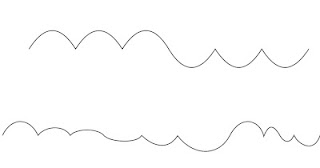Since this is an alternative classification, it's meant to represent the other point of view that almost all types of curly hair are able to achieve definition and clumpage with the use of the appropriate techniques and products, and maybe the achievement of adequate levels of moisture? As you can see from the different photos and videos posted in the thread, there are actually 4b curlies that have achieved beautifully defined curls e.g. our own
@AbsyBlvd (
Are Type 4 Naturals Ignored?)
So for the purposes of making this alternative classification comprehensive we can add a 4p category which means "pending definition"
This will leave us with:
- 4p pending definition: exact diameter unknown and the class will be determined once definition has been achieved
- 4c can be anything between 0-3 mm in diameter be it a curl, a coil or a zigzag.
- 4b beween 4 mm to 6 mm.
- 4a between 7 and 10 mm.
- 3 range: anything more than 10 mm
- 2 range: waves, no curls
- 1 straight hair
Let's also not forget that many people have more than one curl type in their hair. This is normal.
My individual strands form all of the shapes that you have shown in the photos in your post. My curl pattern is weak like that. It is very unlikely for one of my strands to form a perfect coil and it takes the hell a lot of coaxing to make my hair curl and clump. The natural state of my hair is probably simply frizz. Or at least that's the way it is with the modern ways of hair washing ie the raking of shampoo and conditioner. Nowadays I water wash only (my twa, not the rest of my hair) and I don't rake the water. I soak and scrunch. This leaves my hair clean and defined fresh out of the shower.
I never had curly hair growing up even though I was natural but the potential was always there. The way I used to wash, comb and style my hair meant that my hair never got the chance to curl, and as I said my hair needs a lot of coaxing to curl up anyway.
This photo shows some slept-in frizzy messy curls (yet still curls) but notice the encircled area. That's what my hair normally looks like. No clear curl pattern.
View attachment 426706
Just as you described strands "
can be like a squiggly line, a zig-zag line, a line with a scroll at the end, and other types of lines. It shrinks up, but there are no uniform curls all over to measure"






 I still don't know what type 4 I am.
I still don't know what type 4 I am.  Aw thanks. I try.
Aw thanks. I try. ?!?? He based the logic on preventing dryness. The comments were interesting.
?!?? He based the logic on preventing dryness. The comments were interesting.




